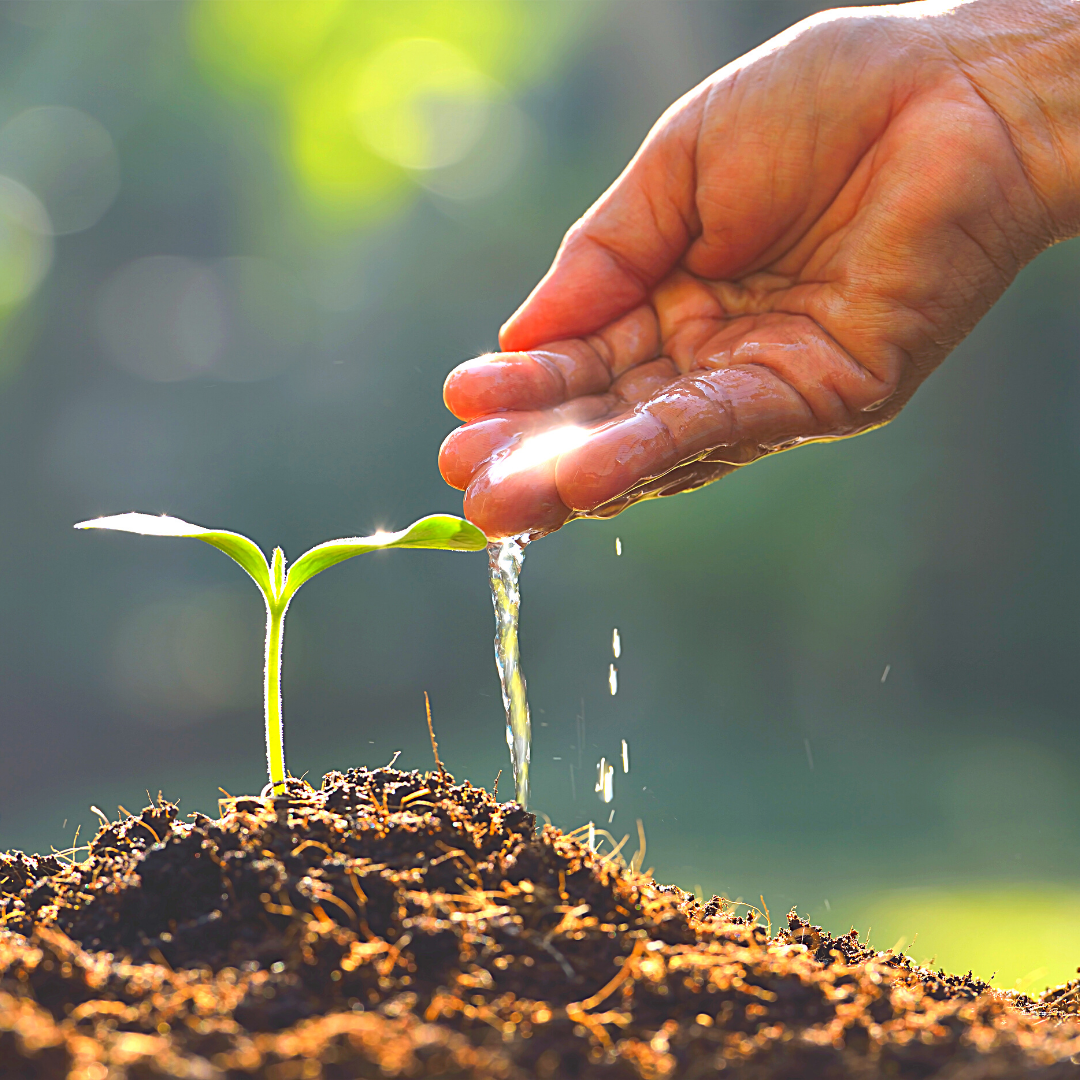I’ve been there. That helicopter plant parent showering your plants with water to show them how much you care. Next thing you know, your ZZ plant is yellowing. You remove it from its pot only to feel some mushy tubers between your fingers. This story is VERY specific (sorry Buddy!) but I know some of you can relate.
Or, you may be on the other side of the spectrum and forgot Buddy in the corner of your guest bedroom. You start preparing the guest bedroom for your aunt who is in town, and see a crispy, unidentifiable plant in the corner. Oops?

Many factors contribute to our houseplants’ growth and health, but in my opinion, the one most difficult to grasp is WATERING.
Throughout my journey with houseplants, I have picked up a few tips that have helped me keep my houseplants adequately watered while avoiding overwatering. Of course, no one is perfect, including me (hence my ZZ plant anecdote above), but hopefully this blog post can help you minimize errors and keep your plants thriving.
There are many reasons why a plant can meet its demise, but when it comes to watering, the two main reasons are:
Overwatering

Waterlogged soil is bad for our plants, as their roots no longer have adequate access to oxygen. It is important for soil to be aerated (i.e. have oxygen in between the soil particles). Overwatered soil can result in root rot and fungus growth. Root rot looks and feels like mushy roots that break off easily.
and
Underwatering

Soil that is underwatered is bone dry throughout the pot. One tell-tale sign of severely dry soil is soil that is pulling away from the edges of the pot. We’ve all been there!
While it is best to try to find the balance for your plants when it comes to watering, I would say that overwatering tends to be the greater threat between the two when it comes to our houseplants. In this 3-part guide, I will outline some telltale signs of overwatering and underwatering, delve deeper into steps you can take to avoid either of these offenses, give tips on how to water a plant and what to do when you have over or underwatered a plant.
Signs of Overwatering
- Yellowing leaves – Leaves can die, so a yellow leaf once in a while is part of the normal life cycle of a leaf. However, a plant with multiple yellowing leaves, or leaves yellowing in quick succession is usually a sign of overwatering.
- Brown tips – this can be a sign of both over and underwatering, but brown tips accompanied by some of the other signs in this list are most likely a sign of overwatering.
- Mushy, soft leaves or stems – this is usually a sign of root rot from excess water.
- Brown, mushy roots that break easily – if you suspect overwatering, pop your plant out of the pot and have a good look at the roots. Mushy roots that break easily when you pull them gently are roots that have rotted.
- Wilting – So this one is tricky, as wilting leaves are a sign of both over-and under-watering. However, leaves that are wilted because the leaf or stem is mushy, is a sign of overwatering. Of course, if you have recently watered your plant, or the soil is soaked AND the leaf is still wilted, then this is definitely a sign that it is overwatered.

Signs of Underwatering
-
Soft, wrinkly leaves, but not mushy – Plants hold water in their leaves; therefore, a telltale sign of underwatering, especially for succulent-like plants, is softer leaves. When adequately watered, these succulent leaves should be firm, with not much give when squeezed. When in need of water, these leaves will be much softer, and may even wrinkle. As you saw above, soft leaves are also a sign of overwatering, which can be confusing! But underwatered leaves should not also be mushy. Of course, if you see soft leaves, and you know you haven’t watered your plant in ages, then it is more likely that it is underwatered.
- Crispy, dry, leaves – I think this goes without saying. However, a crispy leaf could also be a leaf that has died, turned yellow, and then slowly dried out (as the plant will not be supplying any nutrients to that leaf). Keep an eye on the number of crispy leaves on your plant. Multiple crispy leaves are a sign of underwatering.
- Brown tips – Brown tips accompanied by dry, crispy leaves can be a sign of underwatering.
- Wilting – Many plants wilt when they are in need of water. We have many “drama queens” like Peace Lilies or Nerve plants that dramatically wilt like a Southern belle if you skip a watering, only to fully recover once you give them water. If your plant is wilting AND you have not watered it in a while, then the wilting is most likely a result of inadequate water.
Ok so now we know the signs to look for. Stay tuned for part 2 of this series, which will explore tips on how you can prevent over- or under-watering, by figuring out when your plants need water before they get to these extreme states.
By the end of this series, you will be confident plant parents able to anticipate your plant family’s water needs and able to nurse a plant back to health from over- and under-watering.
Check out part 2 of the series
Check out part 3 of the series



1 comment
Pls help me my plant over watering
Recovery
pH 9641957522 call me